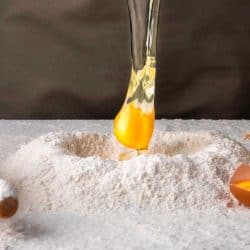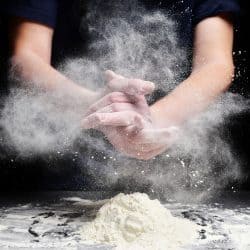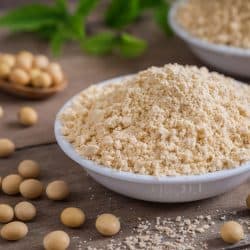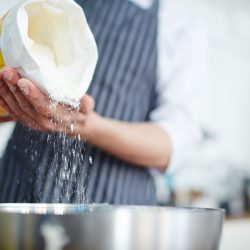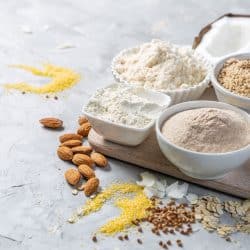You may be wondering whether or not flour will burn in the oven. Here you will find out what types of flour are available, what temperature they will burn at, and more. We have done the research for you all about baking in your oven using a variety of types of flour.
When you are baking, if there is too much flour leftover on your dough or dish, it will most likely burn. Fine wheat flour, typically used for pizza, is especially known for burning in the oven and leaves behind a foul odor and taste. So be sure you do not have your oven temperature turned up too high when baking, particularly if there is excess flour on whatever you are baking. When baking with flour, temperatures of 350°F or lower are recommended.
There is a lot more to learn about baking with the plethora of options of flour. Keep reading to find out more about the temperature flour will burn at, what happens when flour is baked, the difference between all-purpose flour and baking flour, as well as what kind of flour to use when baking bread!
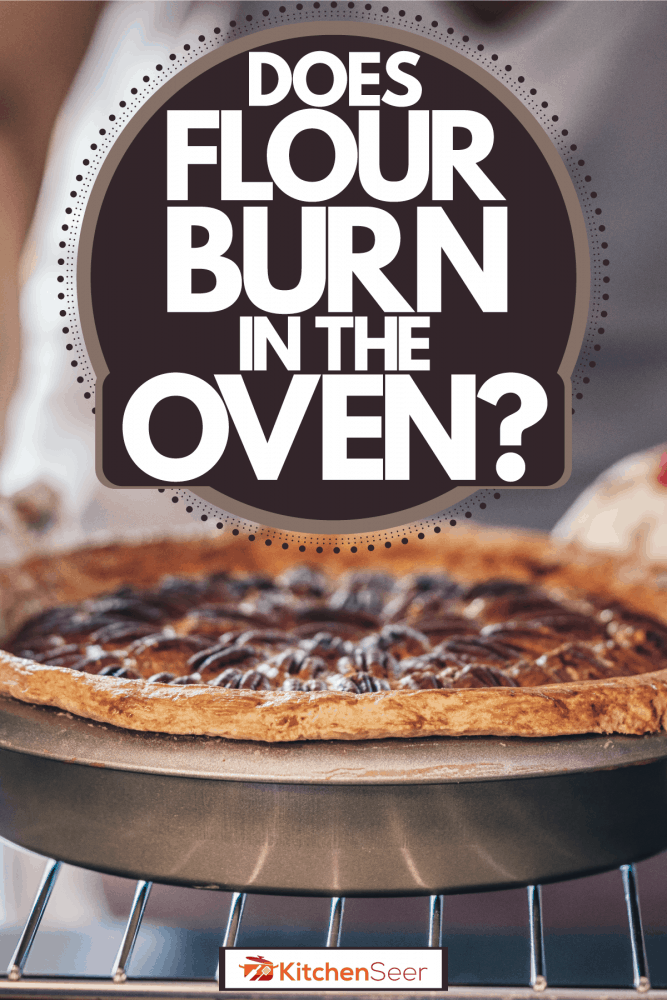
At What Temperature Does Flour Burn?
Most flour burns at high temperatures. Generally, the term flour is referring to white flour. Sometimes you will see "whole-wheat" flour on the label. Whole-wheat flour has more nutrients than white flour. It is also more perishable. Wheat flour is very absorbent and requires more water for the baking process than other types of flour.
Temperatures above 350°F are not recommended for any of the types of flour available. Flour will burn if you bake at a higher temperature than 350°F. You can bake flour without burning it as long as you do so with a temperature of 350°F or lower. If there is excess flour on whatever you are baking, it is more likely to burn, so try to be mindful of how much flour you use.
Wheat flour burns at a lower temperature than other types of flour. If you are interested in using whole-wheat flour, you can substitute it for all-purpose flour most of the time. If you decide to do this, substitute about 1/3 of the amount your recipe calls for as whole-wheat flour and whatever is left over as your all-purpose flour or whichever you are using.
What Happens To Flour When Baked?

It is important to understand that flour gives your baked goods structure. Many people like to bake it prior to mixing it into their recipe. Heat-treated flour is flour that has been exposed to the ideal temperature between 210°F to 230°F for an hour.
Some people like to heat-treat their flour to toast the flour for their chosen cookie recipe or for a no-bake dessert. The purpose of baking flour in this manner is to kill any bacteria that may be in your flour. Baking your flour to at least 160°F is necessary, while 210°F is preferred to ensure any potential bacteria is eliminated.
Baking flour at higher temperatures can cause it to dry out or harden, so be sure to adhere to the recommended temperatures. When you bake flour, the starch granules expand with water which adds to the viscosity of your batter and stabilization of what you are baking.
What Is The Difference Between All-Purpose Flour And Baking Flour?
All-purpose flour is the universal kind. It has a higher amount of protein than most of the other types of flour. All-purpose flour can be abbreviated to A-P flour. It is sold as either bleached or unbleached. Your recipe may call for one or the other, so try your best to match the flour in your recipe with what you use. All-purpose flour can be used to bake pie crusts, biscuits, or bread, to list a few options.
Click here to see Gold Medal flour on Amazon.
Baking flour is a term used to encompass all flours used for baking. Baking flour is also known as cake flour which has the lowest amount of protein compared to flour alternatives. It is most commonly used for baking cakes, biscuits, muffins, and scones. Cake flour tends to result in a higher-rising, more tender cake with what is known as a moist crumb.
Because baking flour or cake flour is usually bleached, the gluten proteins within cake flour are weakened, and the flour's starch is affected. This process is called chlorination. Chlorination makes it so the cake flour can absorb more liquid and sugar to ensure a moist cake or other baked goods.
Another type of baking flour is pastry flour. Pastry flour is an unbleached flour with a protein content that ranges between that of all-purpose flour and cake flour. Because pastry flour tends to turn out more flaky, it is ideal for pie crust, tarts, brownies, and cookies.
What Flour Is Best For Baking Bread?
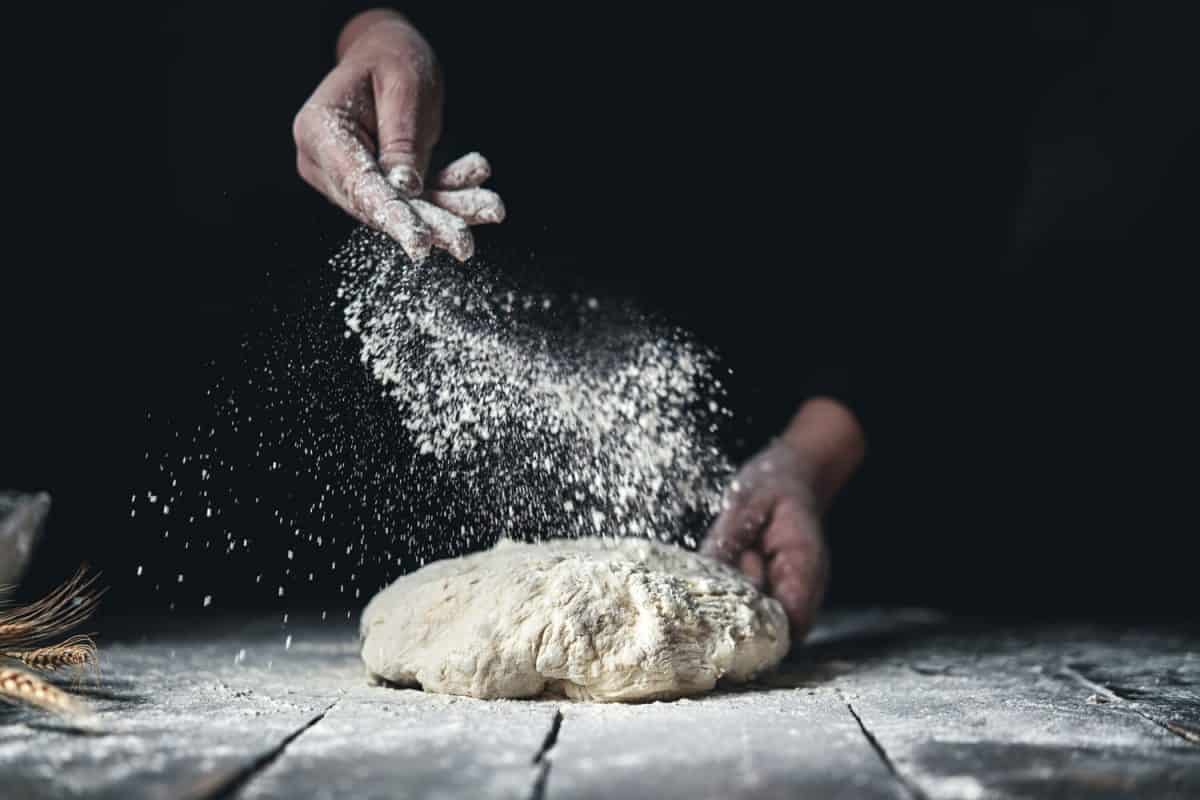
You can potentially bake bread with several different types of flour. The best choice of flour for baking bread is simply called bread flour. Bread flour encompasses the most protein of any of the flour types. The additional protein results in more volume and browning of the crust. You want to know the amount of protein in your flour because it affects the strength of your dough.
Unbleached All-purpose Flour
You can also bake bread with unbleached all-purpose flour. This type of flour is usually chosen for baking softer bread, such as white bread. Bread flour has more gluten in it than all-purpose flour, so baking with it entails using more liquid for the baking process. It may help you to know bread flour is preferred for chewier cookies.
Click here for King Arthur flour on Amazon.
Self-rising Flour
Self-rising flour has had baking powder and salt added to it. If you decide to use self-rising flour, do not add salt. This type of flour is most often used for pancakes, muffins, biscuits, and cakes. It can be used in place of bread flour if you are playing around with different types of flour to see which result you prefer.
Click here for King Arthur flour on Amazon.
Pastry Flour
Pastry flour is an alternative to bread flour for baking bread. It can be used to bake quick breads, such as banana bread, cornbread, zucchini bread, biscuits, soda bread, coffee cake, muffins, pancakes, and scones. High-gluten flour is preferred for chewier bread such as bagels, while butter and egg-rich bread like brioche is usually made by using bread flour.
Click here for Bob's Red Mill flour on Amazon.
Gluten-free flour
Gluten-free flour is also an option for those of you who may experience difficulty digesting gluten. Almond flour, oat flour, brown rice flour, and white rice flour are good examples of gluten-free flour. When baking with gluten-free flour, you will want to add xanthan gum to end up with a similar texture as you would with the other flour options. Xanthan gum is used as a binder and can be substituted with guar gum, locust bean gum, and arrowroot starch.
Click here for PuroRow flour on Amazon.
You can find gluten-free all-purpose flour at the majority of grocery stores. Gluten-free flour can be used for gluten-free pie crust, pasta dough, and pizza dough, to name a few examples. Using gluten-free flour can cause your baked goods to be more tender or crumbly but is a great substitute for those who need to use it.
Click here for Bob's Red Mill flour on Amazon.
In Closing
As you have learned, there are many different types of flour to choose from when making your favorite baked good. Flour will burn in the oven at high temperatures such as 350°F or higher. In order to avoid flour burning in the oven, be sure not to leave behind an excess amount. If you want to bake your flour for the purpose of killing germs or bacteria, bake it for an hour between the temperatures of 210°F and 230°F then let it cool before mixing your ingredients.
Before you go, if you would like to know more about flour such as how to store it or other baking tips check out the following links:
What Is The Best Container To Store Flour? [7 Suggestions]
How Long Do You Bake A Cake In A Bundt Pan? [Plus Some Popular Recipes!]
What Can You Use Instead Of A Bundt Pan? [5 Alternatives To Consider]







